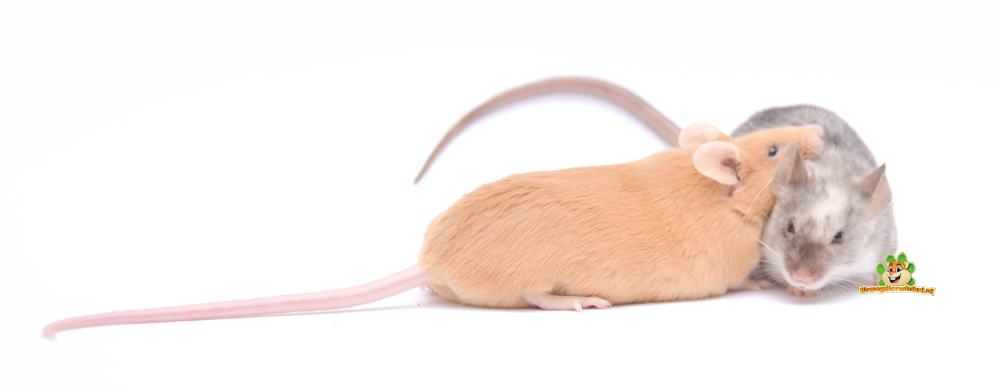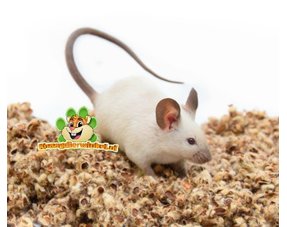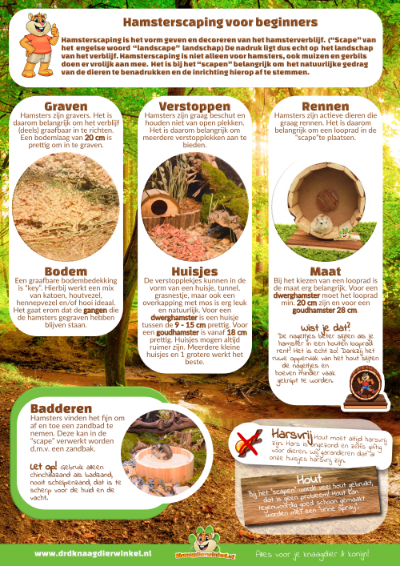The Mouse

The tame colored mouse comes from the house mouse (Mus musculus). Mice are originally from Asia, but thanks to man they have traveled all over the world and ended up in every corner. The bond between humans and mice goes back a long way, because these clever little animals were kept as pets before the era.
Mice are active and curious animals that quickly become tame and get used to their caretaker. They are social animals that should be kept together. Thanks to the long tail, they are also good climbers and can keep their balance well. This also helps them to walk well on the hand and because they see depth, they also stay on the hand.
Head-hull length: 6.5 to 9.5 cm
Body weight: 20 to 40g
Life expectancy: 2 to 3 years
In Western Europe (Mus musculus domesticus) the mouse can be found in buildings all year round. But in Eastern Europe (Mus musculus musculus) also in fields.
Mice live in small groups
A group of several females can usually be kept without any problems
Keep 1 neutered male with 1 or 3 - 4 females unneutered males should not be kept together (fighting for hierarchy)

Tame and familiarize yourself with the Mouse
Always read carefully before you decide to take Muizen. They are very nice pets that are regularly awake, so that they can also be seen during the day. This can be especially fun for children. Mice are very friendly and curious. They can be shy and quick at first. Once the mouse is on the hand, it can balance well thanks to the long tail, the animals move nimbly from one hand to the other or between the fingers. This ensures that they are easier to handle in the hands than, for example, Gerbils or Hamsters.

New residents should be approached calmly, especially at first. The animals must first become familiar with their own enclosure, feel safe in it before they dare to approach people. Of course there are also daredevils who immediately approach you and are social, but most Mice are a bit shy the first time. Give the animals time and try to make contact calmly by talking to them. Handing over some treats often works well to gain the trust of the animals.
Tip! Mice love spray millet!
Housing the Color Mouse
Colored mice are social animals that should be kept together. In the wild they live in colonies with often one dominant male. The best combination is a group of females, males quickly start arguing with each other about ranking. It is important that the animals are coupled at a young age. Newcomers are not easily accepted in old age.
Mice need a spacious enclosure of at least 75 x 40 x 40 cm (LICG) for two animals. For each additional animal, 20% extra ground surface must be calculated. A good stay gives the animals the opportunity to display their natural behaviour. Mice are very active in the wild, they want to keep doing that in captivity, they don't want to be bored. The Mouse needs an extensive stay with lots of play and climbing opportunities. The long tail allows Mice to keep their balance very well, making them great climbers.
Hamsterscaping is also great fun for Color Mice!
In our home, a good mouse enclosure translates into a spacious enclosure with a lot of challenge and plenty of hiding places. A terrarium is the best choice because of its closed nature. It is important that a terrarium allows good ventilation, so preferably has two grids (top and bottom). This is especially important in summer when temperatures rise above 25°C.
Don't give the Mice a sandbox. Sand is too dusty for the sensitive airways of mice.
Colored mice cannot withstand high temperatures in combination with high humidity. An optimal humidity for mice is on average around 55%. A temperature between 20 - 24°C is recommended and a humidity below between 40 - 60%. You can use a hygrometer to measure these values.
House for a Mouse
Color mice are lucky! because many houses that are made for hamsters also have a good size for mice. Mice are prey animals and don't like to walk openly through the enclosure, if they occasionally come across a shelter where they can shoot away, they already feel a lot safer. Mice like to sleep together, so at least one house in the enclosure must be large enough to accommodate the entire group. In addition, one extra sleeping house or hiding place per Mouse is ideal. The animals like to sleep together, but they should also have a place where they can retreat for a while.
Grass houses are also very natural for Muisjes and the animals like it very much because it imitates a natural hiding place.
Mice's urine smells stronger, just like Rats' urine. The animals mark their territory by leaving a drop of urine on everything. This means that parts of the mouse house can quickly start to smell. We therefore recommend using a "Urine Spray" for parts where urine can penetrate.
For wooden accessories it can help to varnish them with clear lacquer. It is not allowed to just use lacquer from the hardware store because of toxic substances. A special paint for animals is best used for this.
Ground cover for the Mice

It is important that the bed cover is excavatable for mice, ie that they can make tunnels and burrows in it, which preferably remain standing. This can be achieved by choosing ground cover that is digable in itself or by mixing ground cover to make it digable. An example of an excavatable ground cover is, for example, the humus and the cave sand, but also cotton & cotton. A nice mix is, for example, the mix of Cotton & Hemp fibre, Cotton & Wood fibre or a mix of Wood fibre, Hemp fiber and Hay. Ground covers such as Back 2 Nature are not suitable because the animals cannot dig in them. An ideal height of the ground bed for digging is around 20 cm.
Just like rats, mice have sensitive airways, so the bedding must not be dusty.
Read more about the Color Mouse here >



Comments
Be the first to comment...